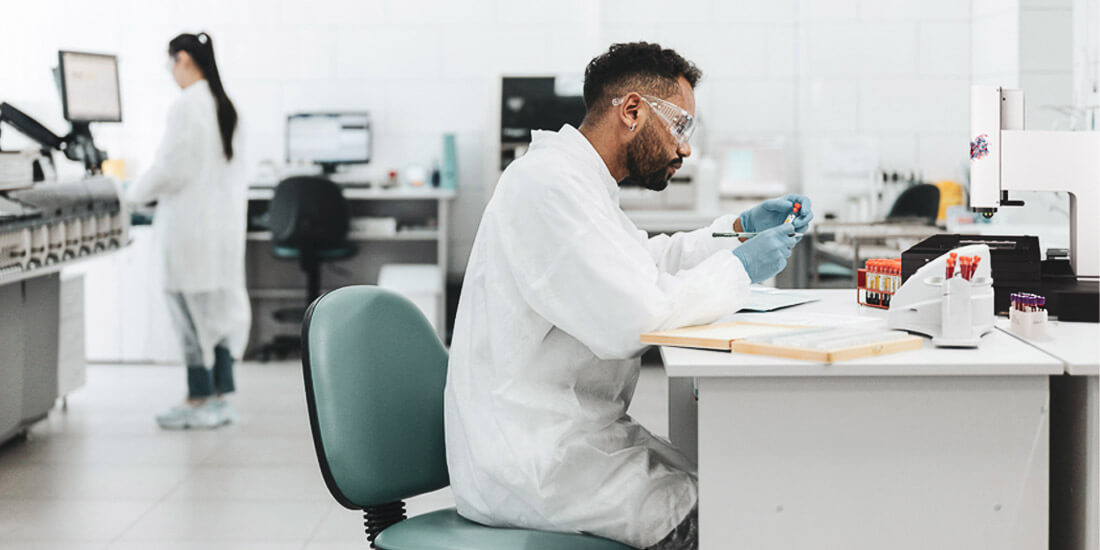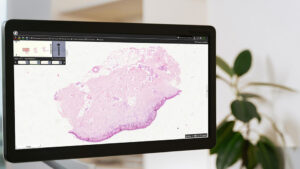Synopsis
The healthcare industry is in a constant state of change, and technology is the most powerful catalyst for this change. It has had a profound impact, making previously cumbersome tasks very simple. Integrating digital cytopathology into workflows provides quick access to accurate results, facilitates collaboration, and promotes efficient data sharing. Digital cytopathology offers a variety of benefits that can enhance your area of expertise and outcomes, ultimately benefiting patients. In addition to the direct impact, adopting digital cytopathology can make significant contributions to the field of cytopathology and digital pathology in general. Let’s take a deeper look at the importance of digital cytopathology and explore the different ways it can transform your productivity and outcomes and reshape the industry.
What Is Cytopathology?
Cytopathology is a branch of pathology that focuses on diagnosing disease by examining individual cells by analyzing cell samples obtained through techniques such as fine-needle aspiration (FNA) and PAP smears. Traditional cytopathology involves examining glass slides under a microscope, which requires physical storage, transportation, and sometimes sharing samples between pathologists. This process is time-consuming and error-prone due to the subjective nature of microscopic interpretation.
Why is Digital Cytopathology So Important?
Digital cytopathology can greatly improve diagnostic accuracy. Traditional microscopy may be limited by factors such as slide quality, illumination conditions, and pathologist expertise. In contrast, digital images are easy to process and can be displayed with optimal contrast and magnification. This allows you to recognize subtle cellular changes and make more accurate diagnoses. The use of computer-aided tools in digital pathology improves diagnostic accuracy by providing objective measurements to support the pathologist’s interpretation.
Cytopathology Used for Biomarker Quantification
In clinical practice, gynecologic cytology was one of the first pathology disciplines to use digital image analysis. Areas of interest are displayed directly on glass slides for the cytopathologist to view. Applications that digitally analyze non-gynecologic cytology clinical images for biomarkers (e.g., ER, PR, Her2, Ki67, PD-L1) often use cell block material. Biomarkers are an excellent source for quantification if appropriate processes are followed before analysis (e.g., cold ischemia and formalin fixation time for breast biomarkers). The use of digital cytopathology will likely continue to grow in the coming years as the need for cytopathology changes.
Applications of Cytopathology
Digital cytopathology can be applied in a variety of fields such as clinical practice, intraoperative consultations, educational purposes, and addressing the shortage of pathologists. The entire process of digital cytopathology relies on converting the visual information obtained from the microscope lenses into digital images that are then transmitted remotely. This is accomplished through digital imaging equipment, computers, and networks.
What Are the Advantages of Digital Cytopathology?
Digital cytopathology enables the viewing of high-resolution digital images through magnification. The level of detail and resolution helps identify subtle cellular changes, leading to more accurate and consistent diagnostic results. Images can be shared instantly as there is no need to transfer physical specimens. This speeds up the diagnostic process and minimizes delays in treatment and critical decision-making, especially in emergencies.
Improved Diagnostic Accuracy
One of the most important advantages of digital cytopathology is that it dramatically improves diagnostic accuracy. You can magnify images, adjust contrast, and use advanced computer-assisted tools to fully interpret images. Digital pathology technology has a lot to offer in terms of improving diagnostic accuracy.
Faster Response Times
Traditional cytopathology is extremely time-consuming. Using physical sections means they must be transported to a pathologist and/or lab, processed, and then reviewed. Digital cytopathology dramatically speeds up the process. Digital images can be uploaded and shared instantly, reducing response times and enabling faster treatment decisions. This rapid diagnosis is especially important in cases that require urgent intervention.
Enhanced Collaboration
The ability to share digital work opens new horizons for pathologists and healthcare professionals around the world. A collaborative approach benefits patients adds to the knowledge of cellular pathology. You can share insights, experiences and developments in best practices.
Enabling Remote Consultations
Digital cytopathology also enables remote consultations, which is especially important in areas where access to specialized healthcare is limited. You can review cases from different geographic locations, reducing the need for patients to travel long distances for specialized advice. This accessibility changes everything, especially for patients in underserved or rural areas.
Effective Education and Training
Another big advantage is the effective way of imparting education and training providing a dynamic platform for pathology education and training. Medical students, residents, and practicing pathologists can access an extensive library of digital pathology slides to learn and hone their skills.
Improved Quality Control
In addition, digital cytopathology optimizes quality control procedures. Laboratories can more effectively optimize your productivity by reviewing digital cases and performing proficiency tests. This ensures that the highest standards of accuracy and consistency are maintained.
Patient Engagement and Empowerment
Patients directly benefit from digital cytopathology as well. Cytopathology reports enable patients to better understand their condition and participate in decision-making with their healthcare providers. This transparency increases patient satisfaction and engagement in the healthcare process.
Conclusion
Integrating digital cytopathology into your lab can bring transformative benefits to your practice and the wider field. The synergy between technology and cytopathology fosters collaboration, enabling seamless sharing of information and remote consultation. One of the most significant benefits is that the efficient processing and display of digital images greatly improves diagnostic accuracy. Unlike traditional methods, digital cytopathology ensures faster turnaround times, resulting in more efficient workflows. In addition, digital cytopathology offers unparalleled training and educational opportunities that enhance your capabilities as well as those of your counterparts and team members. Increased expertise not only strengthens your lab’s workflow but also enriches the knowledge base in the field. Your contributions help answer important questions in the field and propel cytopathology toward a future of innovation and precision, ultimately benefiting patients and practitioners.











